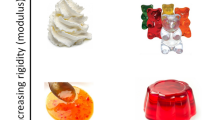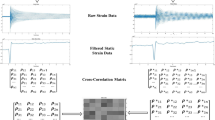Abstract
The evaluation of appearance parameters is critical for quality assurance purposes when determining lifetime and/or beauty of textile products. Practical evaluations of appearance are often performed by human visual inspection, which is repetitive, exhausting, unreliable and costly. Thus, computerized automatic visual inspection has been used to alleviate those problems. Several papers have proposed objective mechanisms for quality inspection mostly using texture analysis approaches which are often not robust enough. One of the main issues for robustness of texture analysis approaches is the capability of distinguishing between similar textures. In this paper, we review, select and evaluate texture analysis approaches for distinguishing fine changes of global texture in degradation of textile floor coverings. As a result, we found that the power spectrum, local binary patterns, the texture spectrum, Gaussian Markov random fields, autoregressive models and the pseudo-Wigner distribution provide good descriptors for measuring fine changes of global texture. That is, those features can be used as starting point in applications involving fine changes of global texture, as well as a basis for the development of new methods.













Similar content being viewed by others
References
Aibara T, Mabuchi T, Ohue K (1999) Automatic evaluation of the appearance of seam puckers on suits. In: Proceedings of the SPIE 3652, machine vision applications in industrial inspection VII, pp 1–4
Waegemana W, Cottyn J, Wyns B, Boullart L, De-Baets B, Van-Langenhove L, Detand J (2008) Classifying carpets based on laser scanner data. Eng Appl Artif Intell 21:907–918
Mirmehdi M, Xie X, Suri J (2008) Handbook of texture analysis, 1st edn. Imperial College Press, London
Zeuch N (2000) Understanding and applying machine vision, 2nd edn. Marcel Dekker, New York, pp 1–7
Siew LH, Hodgson RM, Wood EJ (1988) Texture measures for carpet wear assessment. IEEE Trans Pattern Anal Mach Intell 10:92–105
Davies S, Hall P (1999) Fractal analysis of surface roughness by using spatial data. J R Stat Soc Ser B (Stat Methodol) 61:3–37
Kang TJ, Kim SC, Sul IH, Youn JR, Chung K (2005) Fabric surface roughness evaluation using wavelet-fractal method part I: wrinkle, smoothness and Seam Pucker. Text Res J 75:751–760
Xie X (2008) A review of recent advances in surface defect detection using texture analysis techniques. Electron Lett Comput Vis Image Anal 7:1–22
Orjuela-Vargas S, Vansteenkiste E, Rooms F, De-Meulemeester S, De-Keyser R, Philips W (2010) Evaluation of the wear label description in carpets by using local binary pattern techniques. Text Res J 80:2132–2143
Xin W, Georganas ND, Petriu EM (2011) Fabric texture analysis using computer vision techniques. IEEE Trans Instrum Meas 60:44–56
Jose DJ, Hollies NRS, Spivak SM (1986) Instrumental techniques to quantify textural change in carpet part I: image analysis. Text Res J 56:591–597
Orjuela-Vargas S, Copot C, Syafiie S, Vansteenkiste E, Rooms F, Philips W, De-Keyser R, Van-Langenhove L (2008) Carpet wear classification using coocurrence matrices and support vector machines. In: Proceedings of the 19th annual workshop on circuits, systems and signal processing, pp 378–383
Orjuela-Vargas SA, Ortiz-Jaramillo B, Vansteenkiste E, Rooms F, De-Meulemeester S, de-Keyser R, Van-Langenhove L, Philips W (2012) Automatic grading of appearance retention of carpets using intensity and range images. J Electron Imaging. 21:021106
Mori T, Komiyama J (2002) Evaluating wrinkled fabrics with image analysis and neural networks. Text Res J 72:417–422
Mak KL, Li W (2008) Objective evaluation of Seam Pucker on textiles by using self-organizing Map. Int J Comput Sci 35:1–8
Saint-Marc P, Chen JS, Medioni G (1991) Adaptive smoothing: a general tool for early vision. IEEE Trans Pattern Anal Mach Intell 13:514–529
Wood EJ (1993) Description and measurement of carpet appearance. Text Res J 63:580–594
Palmer S, Zhang J, Wang X (2009) New methods for objective evaluation of fabric pilling by frequency domain image processing. Res J Text Appar 13:11–23
Pourdeyhimi B, Xu B, Nayernouri A (1994) Evaluating carpet appearance loss: Pile Lay orientation. Text Res J 64:130–135
Wang J, Wood EJ (1994) A new method for measuring carpet texture change. Text Res J 64:215–224
Xu B (1997) Quantifying surface roughness of carpets by fractal dimension. Cloth Text Res J 15:155–161
Jensen KL, Carstensen JM (2002) Fuzz and Pills evaluated on knitted textiles by image analysis. Text Res J 72:34–50
Choi CJ, Kim HJ, Jin YC, Kim HS (2009) Objective wrinkle evaluation system of fabrics based on 2D FFT. Fibers Polym 10:260–265
Mohri M, Hosseini-Ravandim SA, Youssefi M (2005) Objective evaluation of wrinkled fabric using radon transform. J Text Inst 96:365–370
Pourdeyhimi B, Xu B, Wehrle L (1994) Evaluating carpet appearance loss: periodicity and tuft placement. Text Res J 64:21–32
Militký J, Bleša M (2008) Evaluation of patterned fabric surface roughness. Indian J Fibre Text Res 33:246-252
Sun J, Yao M, Xu B, Bel P (2011) Fabric wrinkle characterization and classification using modified wavelet coefficients and support-vector-machine classifiers. Text Res J 81:902–913
Abril HC, Torres Y, Navarro R, Milln MS (1998) Automatic method based on image analysis for pilling evaluation in fabrics. J Opt Eng 37:2937–2947
Cristbal G, Hormigo J (1999) Texture segmentation through eigen-analysis of the Pseudo-Wigner distribution. Pattern Recognit Lett 20:337–345
Haralick RM (1979) Statistical and structural approaches to texture. Proc IEEE. 67:786–804
Swain MJ, Ballard DH (1990) Indexing via color histograms. In: Proceedings of the third international conference on computer vision, pp 390–393
Petrou M, Sevilla P (2006) Image processing: dealing with textures, 1st edn. Wiley, London
Heilbronner RP (1992) The autocorrelation function: an image processing tool for fabric analysis. Tectonophysics 212:351–370
Torabi A, Fossen H, Alaei B (2008) Application of spatial correlation functions in permeability estimation of deformation bands in porous rocks. J Geophys Res Solid Earth 113:1–10
Elunai R, Chandran V, Mabukwa P (2010) Digital image processing techniques for pavement macro-texture analysis. In: Proceedings of the 24th ARRB conference: building on 50 years of road transport research, pp 1–5
Chen CH, Pau LF, Wang PSP (1998) The handbook of pattern recognition and computer vision, 2nd edn. World Scientific Publishing Co., Singapore, pp 207–248
Randen T, Husy J (1999) Filtering for texture classification: a comparative study. IEEE Trans Pattern Anal Mach Intell 21:291–310
Unser M (1986) Sum and difference histograms for texture classification. IEEE Trans Pattern Anal Mach Intell 8:18–125
Lianantonakis M, Petillot YR (2005) Sidescan sonar segmentation using active contours and level set methods. Proc Europe Oceans 719–724
Menp T (2003) The local binary pattern approach to texture analysis extensions and applications. PhD thesis. University of Oulu
Dong Y, Ma J (2011) Wavelet-based image texture classification using local energy histograms. IEEE Signal Process Lett 18:247–250
Liu X, Wang D (2003) Texture classification using spectral histograms. IEEE Trans Image Process 12:661–670
Weszka JS, Dyer CR, Rosenfeld A (1976) A comparative study of texture measures for terrain classification. IEEE Trans Syst Man Cybern 6:269–285
Ade F (1983) Characterization of textures by Eigenfilters. Signal Process 5:451–457
Tkacenko A, Vaidyanathan PP, Nguyen TQ (2003) On the Eigenfilter design method and its applications: a tutorial. IEEE Trans Circuits Syst II Analog Digit Signal Process 50:497–517
Manjunath BS, Ma WY (1996) Texture features for browsing and retrieval of image Data. IEEE Trans Pattern Anal Mach Intell 18:837–842
Ortiz-Jaramillo B, Garcia-Alvarez J, Orjuela-Vargas S, Führ H, Castellanos-Dominguez G, Philips W (2012) Quantifying image distortion based on Gabor filter bank and multiple regression analysis. In: Procedings of the SPIE electronic imaging, conference 8293: image quality and system performance IX, 82930E
Burt PJ, Adelson EH (1983) The Laplacian pyramid as a compact image code. IEEE Trans Commun 31:532–540
Chan WY, Law NF, Siu WC (2003) Multiscale feature analysis using directional filter bank. In: Proceedings of the fourth international joint conference on information, communications and signal processing and the fourth Pacific rim conference on multimedia, pp 822–826
Vo A, Nguyen TT, Oraintara S (2006) Texture image retrieval using complex directional filter bank. In: Proceedings of the IEEE international symposium on circuits and systems, pp 5495–5498
Laws K (1980) Textured image segmentation. Technical report, University of Southern California Los Angeles Image Processing Inst
Suzuki MT, Yaginuma Y, Kodama H (2009) A 2D texture image retrieval technique based on texture energy filters. In: Proceedings of the international joint conference on computer vision, imaging and computer graphics theory and applications, pp 145–151
Lavvafi MR, Monadjemi S, Moallem P (2010) Film colorization, using artificial neural networks and laws filters. J Comput 5:1094–1099
Li S, Shawe-Taylor J (2005) Comparison and fusion of multiresolution features for texture classification. Pattern Recognit Lett 26:633–638
Heeger DJ, Bergen JR (1995) Pyramid-based texture analysis/synthesis. In: Proceedings of the 22nd annual conference on computer graphics and interactive techniques, pp 229–238
Areepongsa S, Park D, Rao K (2000) Invariant features for texture image retrieval using steerable pyramid. In: Proceedings of the 5th international symposium on wireless personal multimedia communications, pp 1–5
Mojsilovic A, Popovic MV, Rackov DM (2000) On the selection of an optimal wavelet basis for texture characterization. IEEE Trans Image Process 9:2043–2050
Redondo R, Fischer S, Sroubek F, Cristbal G (2008) A 2D Wigner distribution-based multisize windows technique for image fusion. J Vis Commun Image Represent 19:12–19
Joshi MS, Bartakke PP, Sutaone MS (2009) Texture representation using autoregressive models. In: Proceedings of the international conference on advances in computational tools for engineering applications, pp 386–390
Abbadeni N (2010) Texture representation and retrieval using the causal autoregressive model. Vis Commun Image Represent 21:651–664
Chen CC, Huang CL (1993) Markov random fields for texture classification. Pattern Recognit Lett 14:907–914
Paget R, Longsta D (1995) Texture synthesis via a non-parametric Markov random Field. In: Proceedings of the digital image computing: techniques and applications, pp 547–552
Yang F, Jiang T (2003) Pixon-based image segmentation with Markov random fields. IEEE Trans Image Process 12:1552–1559
Al-Kadi OS (2010) Texture measures combination for improved meningioma classification of histopathological images. Pattern Recognit 43:2043–2053
Zar J (2009) Biostatistical analysis, 5th edn. Prentice Hall, Englewood Cliffs
Thompson WR (2011) Variable selection of correlated predictors in logistic regression: investigating the diet-heart hypothesis. PhD thesis, Florida state university
Genizi A (1993) Decomposition of R 2 in multiple regression with correlated regressors. Stat Sin 3:407–420
Gan G, Ma C, Wu J (2007) Data clustering: theory, algorithms, and applications, 1st edn. ASA-SIAM
Cong G, Ma S (1996) Dyadic scale space. In: Proceedings of the 13th international conference on pattern recognition, pp 399–402
Garca S, Fernndez A, Luengo J, Herrara F (2010) Advanced nonparametric tests for multiple comparisons in the design of experiments in computational intelligence and data mining: experimental analysis of power. Inf Sci 180:2044–2064
Witten IH, Frank E, Hall MA (2011) Data mining: practical machine learning tools and techniques, 3rd edn. Morgan Kaufmann, Los Altos
Haralick RM, Shanmugam K, Dinstein I(1973) Textural features for image classification. IEEE Trans Syst Man Cybern 3:610–621
Wu Y, Pourdeyhimi B, Spivak SM, Hollies NRS (1990) Instrumental techniques to quantify textural and appearance changes in carpet part III: Colorimetric image analysis. Text Res J 60:673–687
Cant JS, Large ME, McCall L, Goodale MA (2008) Independent processing of form, color, and texture in object perception. Perception 37:57–78
Cavina-Pratesi C, Kentridge RW, Heywood CA, Milner AD (2010) Separate channels for processing form, texture, and color: evidence from fMRI adaptation and visual object agnosia. Cereb Cortex 20:2319–2332
Acknowledgements
This research is partially supported within the framework of WearTex project 2010−2011 funded by CWO; fellowship between Universiteit Gent, Universidad Antonio Nariño and Universidad Nacional de Colombia; and Universiteit Gent, iMinds,IPI. This work is partially supported by the project Universidad Nacional de Colombia, cod 20501007205.
Author information
Authors and Affiliations
Corresponding author
Rights and permissions
About this article
Cite this article
Ortiz-Jaramillo, B., Orjuela-Vargas, S.A., Van-Langenhove, L. et al. Reviewing, selecting and evaluating features in distinguishing fine changes of global texture. Pattern Anal Applic 17, 1–15 (2014). https://doi.org/10.1007/s10044-013-0352-8
Received:
Accepted:
Published:
Issue Date:
DOI: https://doi.org/10.1007/s10044-013-0352-8




